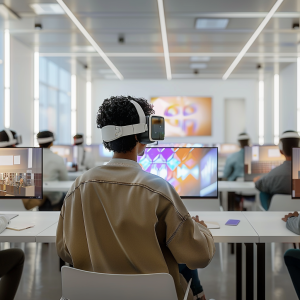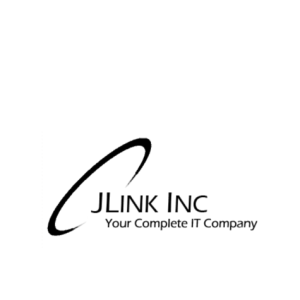
Artificial intelligence (AI) is rapidly transforming industries around the globe, and education is no exception. From personalized learning experiences to automated grading systems, AI is reshaping how students and educators approach learning. As technology continues to evolve, students need to understand and utilize the AI tools that are becoming increasingly integrated into their academic lives.
The benefits of AI in education are far-reaching. These tools can adapt to a student’s unique learning style, provide real-time feedback, and automate repetitive tasks, allowing both students and educators to focus on what matters most—learning. Whether you’re a student trying to boost productivity or a teacher looking to improve engagement, AI is becoming a key player in education.
This blog will explore some essential AI tools every student should know. From intelligent tutoring systems to AI-powered study assistants, these tools are shaping the future of education. However, to fully unlock the potential of AI, a fast and reliable internet connection is critical—especially for those in remote learning environments. With JLink’s fiber internet, students can seamlessly integrate these advanced technologies into their daily routines, ensuring a smoother, more efficient learning experience.
Let’s dive into the world of AI in education and discover the tools that are revolutionizing how students learn and succeed.
The Role of AI in Education Today
Artificial intelligence (AI) has emerged as a transformative force in education, offering tools that enhance teaching and learning experiences. AI in education uses advanced algorithms and machine learning to automate tasks, analyze data, and provide personalized student support. Its growing influence is changing how students engage with content and how educators deliver lessons, making education more interactive and efficient.
One of the most significant contributions of AI in education is personalized learning. Traditional classrooms often struggle to meet the individual needs of every student, but AI-powered systems can adapt to a student’s learning pace, preferences, and abilities. These systems analyze student performance in real time and adjust the learning material accordingly, ensuring each student gets a tailored educational experience. For instance, tools like DreamBox Learning use AI to adjust math lessons based on how well a student understands the current content. This level of personalization helps students grasp concepts more effectively, improving engagement and retention.
AI is also being utilized to automate educational administrative tasks, allowing teachers to focus more on instruction and student interaction. Tools like Gradescope automate grading for multiple-choice exams and even some open-ended assignments, reducing teachers’ workload. By eliminating the time-consuming task of grading, AI allows educators to spend more time developing lesson plans and offering individualized student support.
Moreover, AI is improving student engagement through interactive platforms. Intelligent tutoring systems (ITS) like Carnegie Learning’s MATHia offer real-time feedback and customized lessons, simulating one-on-one tutoring experiences. These systems are reactive and proactive, identifying potential challenges a student may face and providing support before they fall behind. This proactive approach has proven to boost confidence and improve academic outcomes for many students.
The role of AI in education today is centered on improving both efficiency and personalization. As AI continues to evolve, it will play an increasingly integral role in how students learn and educators teach. However, a fast and stable internet connection is crucial to fully benefit from these technologies, as many AI-driven tools require real-time data processing and interaction. That’s why a reliable internet provider like JLink is vital to maximizing the potential of AI in education.
Essential AI Tools for Students
AI tools are rapidly becoming indispensable in the modern educational landscape. They help students in different subjects and learning styles. From virtual tutors to adaptive learning platforms, these tools empower students to take control of their learning journeys and achieve better outcomes. Below are some of the most essential AI tools every student should know.
Intelligent Tutoring Systems (ITS)
One of the most powerful AI-driven tools in education is the Intelligent Tutoring System (ITS). These systems simulate one-on-one tutoring by providing real-time feedback and personalized instruction to students. Unlike traditional classroom settings, ITS platforms tailor lessons to individual learning needs, allowing students to progress at their own pace. For example, Carnegie Learning’s MATHia is an ITS designed to teach math by adapting to a student’s strengths and weaknesses. By continually analyzing the student’s performance, MATHia adjusts the difficulty of tasks and offers step-by-step guidance, ensuring students grasp fundamental concepts before moving on.
AI-Powered Study Assistants
AI-powered study assistants, such as Quizlet, Socratic, and Wolfram Alpha, have revolutionized how students access information and prepare for exams. These tools use AI to help students find answers to complex questions, generate study guides, and even break down difficult concepts. For instance, Wolfram Alpha acts as a computational knowledge engine, capable of solving intricate math problems and providing detailed explanations for various subjects. Meanwhile, Quizlet uses AI to generate customized flashcards based on a student’s learning patterns, allowing for more efficient memorization and recall.
AI in Learning Management Systems (LMS)
Learning Management Systems (LMS) are increasingly integrating AI to enhance the student experience. AI within an LMS can suggest relevant resources, personalize coursework, and track student progress. For example, platforms like Canvas and Blackboard are embedding AI features that analyze student performance and recommend additional reading materials or tutorials based on individual progress. This personalization helps students stay on track, making the learning experience more tailored and effective.
Speech Recognition and Text-to-Speech Tools
AI-powered speech recognition and text-to-speech tools have become critical for students, especially those with learning disabilities or language barriers. Tools like Google’s Live Transcribe and Natural Reader allow students to convert speech into text in real time or listen to written content aloud. These tools ensure that all students, regardless of their learning challenges, have access to course materials in formats that suit their needs. Students learning new languages can also use these tools to practice pronunciation or translate content on the fly.
Adaptive Learning Platforms
Adaptive learning platforms use AI to adjust the pace and content of learning based on how well a student is performing. DreamBox Learning and Smart Sparrow are two examples of adaptive platforms that analyze student data in real-time and modify lessons accordingly. DreamBox, for instance, offers math lessons that adapt based on how quickly or slowly a student completes a task. This ensures that students who need more practice get it, while those ready to move on can progress at their own speed, avoiding boredom and frustration.
These essential AI tools not only enhance learning experiences but also provide the personalized support that traditional classrooms often lack. However, to make the most of these tools, students need a reliable and fast internet connection to ensure real-time data processing and interaction. With JLink Fiber, students can seamlessly access these AI-powered platforms without interruption, ensuring their educational success.
Preparing Students for a Future with AI
As artificial intelligence continues to evolve, it’s becoming clear that the future workforce will need a solid understanding of AI-driven tools and technologies. Preparing students to navigate a world shaped by AI is critical for ensuring they have the skills necessary to thrive in tech-driven careers. Here’s how AI in education can help equip students for the future and why embracing AI tools today will give them a head start.
AI as a Skill for Future Careers
AI is already a key player in the healthcare and finance industries, and its influence is only set to grow. According to research from the World Economic Forum, by 2025, AI will have a role in more than 75 million jobs globally. This means students familiar with AI tools, even at a basic level, will have a competitive edge when entering the workforce. Understanding how AI functions and how to leverage it for problem-solving, data analysis, and innovation is becoming essential.
AI-based education tools help foster critical thinking, creativity, and adaptability—all crucial skills in the evolving job market. By using AI in classrooms, students gain hands-on experience with technologies they will likely encounter professionally. Whether it’s learning how to analyze data with AI-powered tools or using intelligent systems to solve complex problems, students are being prepared for a future where AI will be integrated into nearly every industry.
Encouraging Early Adoption of AI
Introducing AI tools at an early age is key to helping students become comfortable with technology. The earlier students interact with AI-powered tools, the more likely they are to embrace and utilize them effectively in their future careers. AI in education doesn’t just prepare students for tech roles; it also fosters a mindset of continuous learning and innovation, traits that are increasingly valued across all job sectors.
For example, AI-driven platforms like DreamBox Learning, which adapts to a student’s learning pace, teach students to become proactive problem-solvers. Students learn to embrace challenges, analyze their progress, and adapt their strategies accordingly. This mindset—driven by AI technologies—translates into a skill set that will serve them well in the professional world, where adaptability and problem-solving are paramount.
AI in Non-Tech Careers
While AI is often associated with tech-heavy roles, its influence is spreading across industries that may not seem immediately tech-focused. From marketing to education, agriculture to entertainment, AI is being utilized to streamline processes, improve customer experiences, and analyze data. As students learn to use AI tools, they are preparing for a future in which AI is embedded in various fields, including those that don’t require a deep understanding of computer science.
For instance, in the healthcare industry, AI is used to improve diagnostics and personalize patient care. In marketing, AI helps analyze consumer data to create more targeted campaigns. AI is even being used in agriculture to optimize crop yields through predictive analytics. The broad application of AI means that students in almost any career path will benefit from a foundational understanding of how AI works and how it can be leveraged to solve problems.
As AI continues to reshape industries, preparing students for a future where AI skills are in high demand is essential. Whether students aim for tech-focused careers or enter non-tech fields, understanding and using AI tools will be a critical advantage. By embracing AI now, students are positioning themselves for long-term success. However, students need reliable, high-speed internet to fully access these AI-driven tools. With JLink Fiber, students can experience the seamless connectivity they need to thrive in an AI-powered future.
Conclusion
Artificial intelligence is no longer just a futuristic concept; it’s here, and it’s transforming the way students learn and how teachers teach. From personalized learning platforms to AI-powered grading systems, AI makes education more efficient, interactive, and accessible. As we’ve explored, the essential AI tools available today set students up for success—not only in the classroom but also in their future careers, where AI skills will be in high demand.
However, to fully benefit from AI in education, students and schools alike need reliable, high-speed internet to support real-time data processing and access to cloud-based AI tools. Without a fast, stable internet, the potential of AI-driven learning experiences can be limited.
By investing in JLink Fiber, you can ensure that students and educators in Bloomsburg have the connectivity they need to take full advantage of these cutting-edge tools. Whether it’s for remote learning, classroom integration, or future career preparation, JLink Fiber provides the fast and reliable internet connection necessary for success.
Get the most out of AI in education with the best internet in Bloomsburg. Sign up for JLink Fiber today to experience seamless, high-speed connectivity and unlock the full potential of AI-driven learning.

